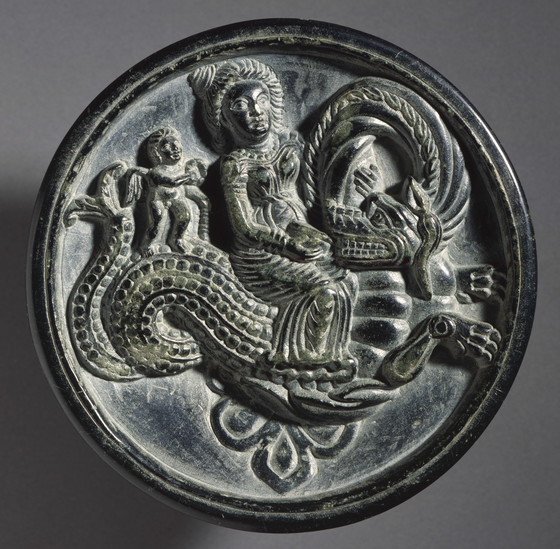Ritual Tray with a Nereid (Sea Nymph) and a Cherub Riding the Sea Monster Keto

Please log in to add this item to your gallery.
View comments
No comments have been posted yet.
Add a comment
Please log in to add comments.
Please log in to add tags.
* Nearly 20,000 images of artworks the museum believes to be in the public domain are available to download on this site.
Other images may be protected by copyright and other intellectual property rights.
By using any of these images you agree to LACMA's Terms of Use.
Ritual Tray with a Nereid (Sea Nymph) and a Cherub Riding the Sea Monster Keto
Pakistan, Taxila area (?), Gandhara region, 1st century BCE
Furnishings; Serviceware
Black chloritic schist
Height: 3/4 in. (1.91 cm); Diameter: 4 7/8 in. (12.38 cm)
Purchased with funds provided by the South and Southeast Asian Acquisition Fund and the Southern Asian Art Council (M.2003.70)
Not currently on public view


